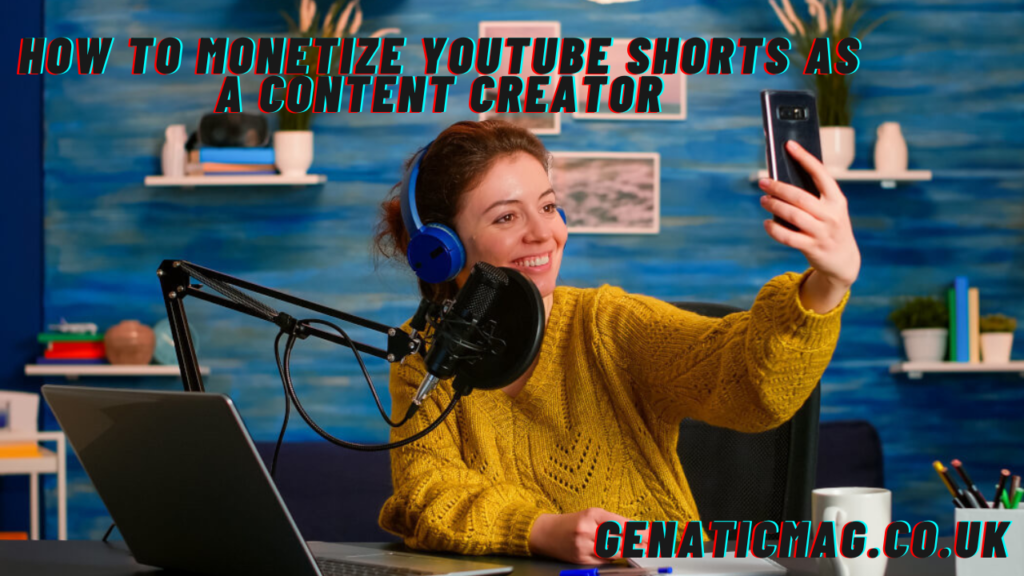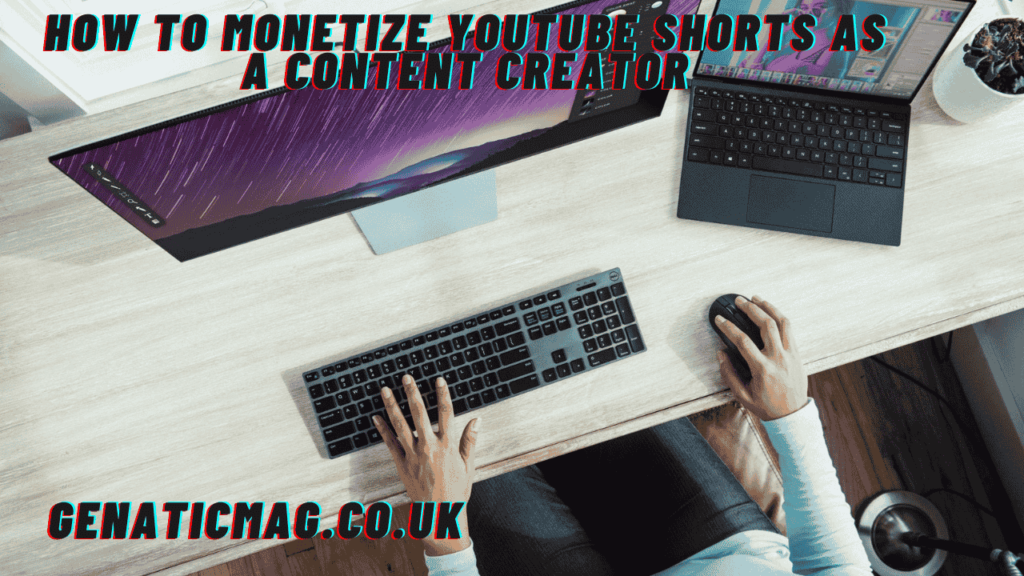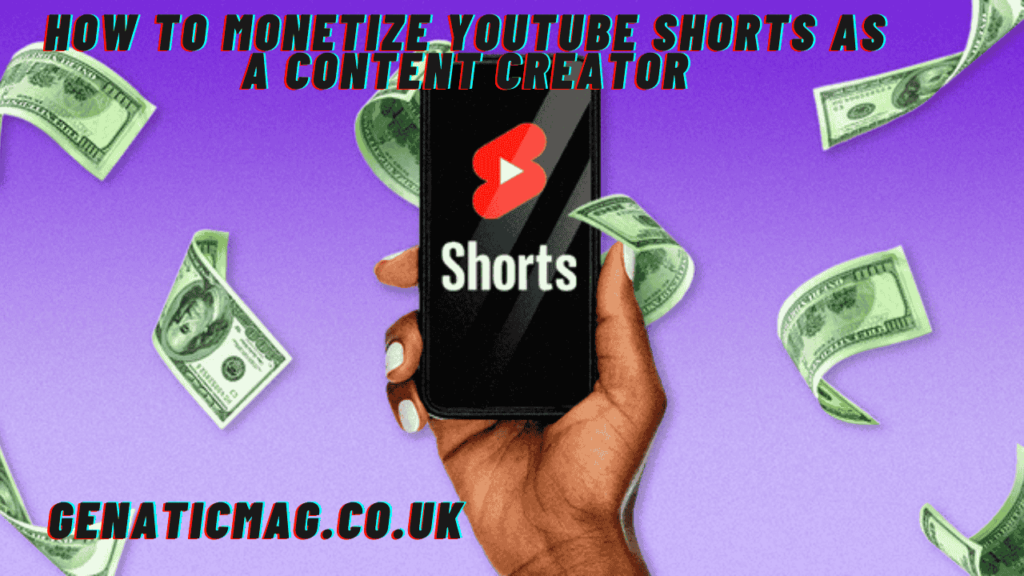As short-form video content continues to dominate the digital space, YouTube Shorts has quickly become one of the leading platforms for creators seeking exposure, engagement, and — importantly — monetization. But how to monetize YouTube Shorts as a content creator?? That’s the big question every aspiring YouTuber wants the answer to. This in-depth guide will break down everything you need to know about turning your short videos into real revenue.
Let’s dive into how to monetize YouTube Shorts as a content creator, uncovering strategies, revenue sources, eligibility requirements, and tips to help you succeed in this booming format.
1. Understanding YouTube Shorts Monetization: What’s New?

Before we explore the various ways to earn from Shorts, it’s essential to understand how YouTube has shifted its monetization policies in recent years — particularly with the rise of short-form content.
In 2023, YouTube launched monetization through the YouTube Shorts ad revenue sharing model, finally offering a more structured way for short creators to earn. Unlike the previous YouTube Shorts Fund, which paid select creators monthly from a pool of funds, the current model allows eligible creators to earn a portion of ad revenue generated on the platform.
As of 2024 and into 2025, YouTube Shorts monetization is now fully integrated into the YouTube Partner Program (YPP). That means Shorts creators must meet certain requirements to qualify, but once in, they can enjoy consistent and scalable earnings from ads — just like long-form content creators.
2. Meeting the Eligibility Criteria for Shorts Monetization

To access revenue from Shorts, you must be a member of the YouTube Partner Program. YouTube gives creators two ways to qualify:
Path 1: Long-Form Route
- 1,000 subscribers
- 4,000 watch hours in the past 12 months (from long-form content)
Path 2: Shorts Route
- 1,000 subscribers
- 10 million valid public Shorts views over the past 90 days
The second route is designed specifically for Shorts creators. Once you meet the requirements, you can apply for the YPP directly from the YouTube Studio dashboard. Once accepted, you’re eligible to monetize Shorts via ad revenue and other income streams.
3. How Does the Ad Revenue Work for Shorts?

Here’s where it gets interesting. The monetization of Shorts works differently from regular videos.
YouTube runs ads between Shorts in the Shorts Feed (rather than directly on individual Shorts). Revenue from these ads is then pooled and split among eligible creators based on various factors:
- Music use: If you use copyrighted music in your Short, a portion of your revenue goes to music rights holders.
- Number of views: Your share depends on how many views your Shorts generated in comparison to other monetized Shorts.
- Ad performance: The more successful the ad campaigns, the larger the revenue pool.
Typically, YouTube keeps 55% of the ad revenue and distributes the remaining 45% to creators (after accounting for music licensing deductions).
So the key takeaway? The more engaging and widely viewed your Shorts are, the more money you’re likely to earn.
4. Diversify Your Earnings Beyond Ad Revenue
While Shorts ad revenue is a great start, it’s not the only way to make money. If you really want to learn how to monetize YouTube Shorts as a content creator??, you need to think beyond the default income stream.
Here are several ways to supplement your Shorts income:
a. Brand Sponsorships & Partnerships
Brands are now investing in short-form content more than ever. If your Shorts gain traction and your niche is well-defined (beauty, fitness, finance, etc.), companies may reach out for paid promotions. You can also pitch brands yourself with a professional media kit showcasing your engagement metrics.
b. Affiliate Marketing
Promote products or services in your Shorts and earn commissions via affiliate links. Even if you can’t link directly in the Shorts video, you can redirect viewers to your channel bio or pinned comments on longer videos for more info.
c. Merchandise Sales
If you’ve built a strong personal brand, selling merch like t-shirts, mugs, or digital downloads can be a solid revenue stream. Platforms like Spring (Teespring) and Spreadshop integrate easily with YouTube.
d. YouTube Super Thanks & Channel Memberships
These features are part of the YPP and allow fans to support you directly. While these tools are often used with longer videos, they’re a great addition if Shorts help grow your fanbase.
5. Tips to Maximize Revenue with YouTube Shorts
Monetizing YouTube Shorts isn’t just about uploading content and hoping for the best. You need a strategy. Here are key tips that can help boost your visibility and increase your income potential:
a. Hook Viewers Early
The first 2-3 seconds of a Short are crucial. Start with a bold hook — a question, reaction, or visual — to get people to stop scrolling and watch.
b. Post Consistently
Upload regularly to build momentum. Daily or multiple-times-a-week posting can help increase your visibility on the Shorts feed.
c. Use Trending Sounds Wisely
Using popular music or sound bites can help your Shorts gain traction. But remember: using copyrighted music may affect your share of the ad revenue.
d. Engage With Comments
Build community by responding to viewer comments. This increases engagement, boosts the algorithm, and builds loyal fans who are more likely to support you via other monetization channels.
e. Experiment with Niche Content
Try creating content around trending niches: tutorials, productivity hacks, “aesthetic” content, quick humor, storytelling, or niche facts. Find what resonates most with your audience.
6. Tracking Your Performance and Earnings
Once you’re monetizing your Shorts, it’s important to monitor your progress. Use YouTube Studio analytics to track:
- Views and watch time
- Revenue (both overall and from Shorts)
- Top-performing Shorts
- Audience demographics
- Engagement rates
This helps you refine your content strategy, understand what’s working, and double down on your strengths.
If you’re experimenting with monetization tactics like affiliate marketing or sponsorships, be sure to keep records of your deals, traffic sources, and conversion data.
7. The Future of Shorts Monetization in 2025 and Beyond
With platforms like TikTok, Instagram Reels, and YouTube Shorts competing fiercely, it’s clear that short-form content is here to stay. YouTube’s constant innovation in creator tools — such as AI-powered editing, Shorts remixes, and interactive stickers — points toward even more ways for creators to engage and earn.
As a creator, the best thing you can do is stay informed, stay consistent, and explore all available income streams. YouTube Shorts offers a unique opportunity to grow quickly and earn while doing it — but success depends on creativity, timing, and strategy.
Final Thoughts
So, how to monetize YouTube Shorts as a content creator?? It’s a blend of understanding YouTube’s new monetization model, qualifying for the Partner Program, optimizing your content for virality, and tapping into multiple revenue streams.
With the right approach, you can turn 15-second videos into a serious income stream. The creator economy is evolving fast, and YouTube Shorts is one of the most powerful tools at your disposal. Start creating, stay consistent, and keep refining your strategy — and the results will come.
Also Read : Dr Sara Kayat: A Comprehensive Insight into Her Life and Career
